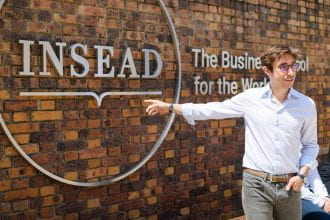iW50 is ending, but INSEAD’s work to advance gender balance has just begun

What a year. What a celebration.
By all measures, iW50 has been a resounding success this year. The global celebration has accomplished what it set out to do—recognise 50 years of women at INSEAD and bring greater attention to gender balance issues—and more.
“We have really made dramatic progress in the last year,” says Zoe Kinias, Academic Director of the Gender Initiative and Associate Professor of Organisational Behaviour.
“From disseminating our latest research on gender balance to convening conversations with global thought leaders to highlighting strong role models for aspiring women leaders, iW50 and the Gender Initiative have inspired real change within our community. Awareness about gender balance is much higher now than it was a year ago.”
Nida Januskis, Associate Dean of Advancement, agrees. “There’s been a significant mindset shift,” she says.
“We’ve seen so many different stakeholders—alumni, faculty, staff and students—come together to drive meaningful change.
They are shaping new values and norms for gender balance and leading by example in their communities and organisations.”
In addition, iW50 and the Gender Initiative have built a strong foundation for advancing gender balance at INSEAD, says Helen Duce, Executive Director of the INSEAD Gender Initiative.
“This year was about establishing a clear baseline, setting targets and launching a dashboard,” she explains. “Our goal was to build awareness across our community while creating alignment on our long-term research plan and building a business case for our efforts. Our next step is to sustain this work by securing funding, increasing our research staff, and redesigning internal processes and systems—so we can really accelerate.”
A call to action for all
All men and women can, and should, contribute to this effort, note Kinias and Duce. They encourage individuals and organisations to take action in the following ways.
For women: Lean in. Live by the advice you’d give other women in business. Sit at the table, make your voice heard, embody what is possible. Find supporters and advocates, build strong networks and always negotiate. Remember that you are a role model. We each have a part to play in shattering the glass ceiling, closing the pay gap and empowering each other.
For men: Champion gender equality. Hire more women, promote women to leadership roles, and assess and close the pay gap in your organisation. Learn how bias can reinforce gender inequality and challenge it when you see it in yourselves and others. Advocate for women, making sure their voices are heard and successes are recognised.
For organisations: Step up. Set clear and public targets on gender representation, and then monitor and evaluate them. Challenge and engage both men and women in your organisation to see gender balance as a business issue and a societal issue, not a women’s issue. Seek out and test solutions and share what works.
For donors: Fund scholarships and research. Consider funding research that will lead to better interventions to develop gender balance or donating to scholarships that support the education of women in business. With increased resources, we can create new opportunities for women and develop practical solutions for pervasive problems, such as the gender pay gap.
When you consider the size and scope of the INSEAD community, these actions can have an incredible ripple effect, says Januskis. “We are 56,000 strong in 174 countries,” she says. “No other school has this depth and breadth in their community. We need to leverage this strength to maximise our impact.”


